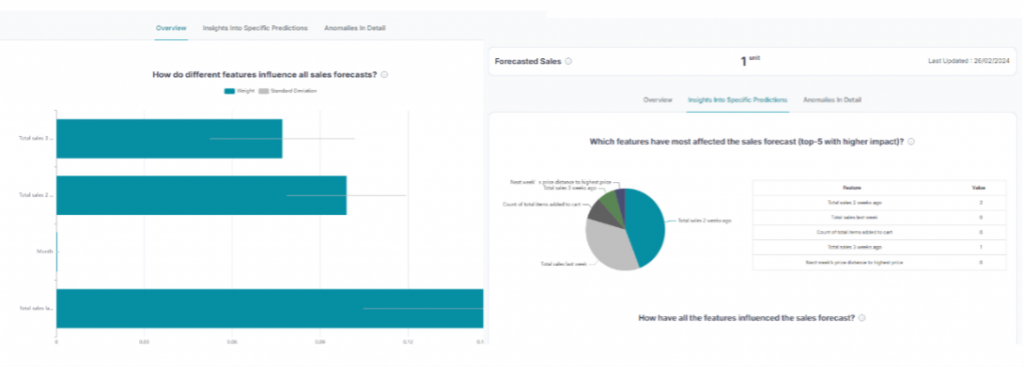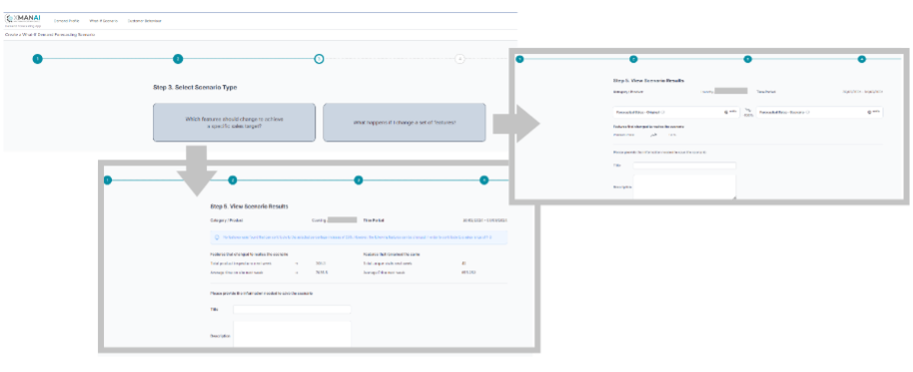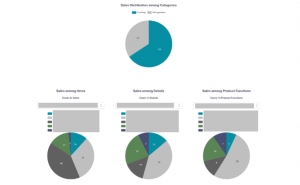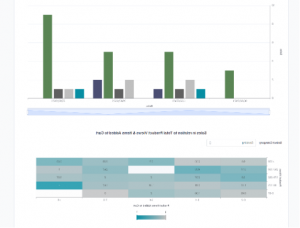XAI Applications in the Direct to Consumer (D2C) market. The Whirlpool use cases
Whirlpool Corporation is the world’s leading kitchen and laundry appliance company, with approximately $19 billion in annual sales, 78,000 employees, and 57 manufacturing and technology research centers in 2020. With a sales presence in more than 35 countries and manufacturing sites in 5 countries, Whirlpool owns its Centre of Excellence for Research in Italy, in Cassinetta, (Varese district), and in Fabriano (Ancona district), employing researchers and technicians working on the development of innovations which are transferred to all Europe, Middle East and Africa businesses of the group.
In the XMANAI project, the pilot’s scope has been extended beyond pure manufacturing to cover an important business challenge like sales demand forecasting: the purpose of XAI is to provide a clear explanation of the business dynamic of a D2C (Direct To Consumer) market to achieve a better control on production planning and better results in terms of sales, margins and customer satisfaction.
Demand forecasting use case
The primary use case is about the generation of demand forecasts in the D2C market, generating clear evidence of expected sales by product and date, to properly configure the supply chain process ensuring the necessary product availability.
The following benefits are in hand:
• The central demand planning team benefits from AI’s support in making the best decisions to supply the right product, in the right quantity, at the right time, maximizing customer satisfaction, and minimizing the value of product inventory.
• The D2C marketing and sales team benefits from this information in properly executing market actions (prices, promotions, range of products offered, etc.) to maximize margins and increase profit.
Definitively, this objective is not the most important as the XMANAI platform is expected to offer the users the possibility to get explanations about the generated forecast, further supporting the decision-making process and deeply understanding the dynamics of the business behavior. The key enabler of AI adoption in the mid-long term is, without any doubt, the “trust” that users must achieve to proficiently interact with the system, and this is mandatory to pass through the XAI as the capability of the AI system to explain the reasons of a specific result. The XAI functionality allows the users to understand the correlation among the different features, generating the forecast result and directly experimenting with the effect of each of them on the outcome. This enables a deep understanding of the features that may be driven to achieve the expected sales results, leading to higher business performance and customer satisfaction.

Forecasting and decision-making support use case
XMANAI platform offers the users not only the possibility to get access to a reliable forecast of sales per each product in a specific time horizon (next week or next 4 weeks), but it also discloses the possibility to see which the main features are impacting forecasted value, as shown in figure 2.

This information is important as some of these features may be controlled by users applying specific actions like changing selling prices, launching promotions, modifying the website to retain potential customers longer on a specific page, and so on. The visibility of the type of impact for each feature, and not only the entity, is important as well to ensure that the actions that users may adopt drive in the desired direction. Knowing if a feature may push up or down the forecast provides actionable information for users, as shown in figure 3.

The system may also provide an alert in case of “anomalies” identified in the forecast profile, as shown in Figure 4, which may be used to further investigate in advance hidden phenomena that may create potential issues in products offered to customers. Users to better understand the root causes and take mitigation or sustain actions, if needed can further investigate these anomalies.

The platform also offers the possibility to simulate these actions and to see the effect of these changes on forecasted value with “What if” functionality, which may be used to envision what happens to forecast in case of changes applied to one or more features or to show which is the expected values of some feature to ensure a desired forecast. The generated scenarios may be also saved and analyzed to better decide action plans, as shown in Figure 6.


Finally, the platforms may offer users visibility on patterns in sales or on correlations among different features, which increases their knowledge of business dynamics. The XMANAI functionality offers the possibility to deep dive into the forecast and historical data to have full visibility of the behavior of the products in the offered range, as shown in Figure 7. The functionality also offers the possibility to visualize the correlation between some key features and the sales result in the past, as shown in Figure 8, to provide interesting tips on actions that may be executed on the sales website.


Results
The preliminary results of the first demo session held with users confirmed the validity of the visualization dashboard developed within the XMANAI Manufacturing App and the flexibility of the XMANAI platform in configuring data pipelines and offering ML tools for a wide range of applications. Some important key learnings were collected that are very relevant for the next phase of the project and for the future exploitation of the XMANAI solution in the company. Firstly, the quality of the data pipeline is crucial to ensure the quality of the results: this seems to be trivial, but the companies realize the real quality of their data only when they start the challenge of predictive analytics and, in case it is proven poor, the cleansing activity may be long and complex. In addition, the companies often do have not, within their organizations, the competence and/or the accountability to manage the data pipeline, as the awareness of the importance of data management is still very immature. Finally, also the awareness of the users on what AI and XAI may offer in terms of opportunities and constraints is in general still very poor and polluted by the news and fake information available on social networks and the internet, which inflate expectations and fears.
Therefore, the right path for the completion of the XMANAI project and its successful deployment must act both on technical and organizational aspects in a holistic approach to the XAI technology introduction.
Key benefits are expected by the successful completion of the demonstrator both in terms of business results and of people knowledge maturation:
• Customer satisfaction
• Revenue’s opportunity maximization
• Tailored inventory strategy
• Promotional actions effectiveness
• Product range optimization

